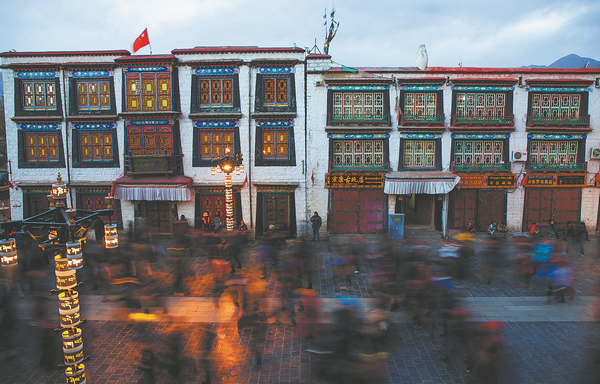

In July 2021, President Xi Jinping visited the street during his tour of the autonomous region, during which he inquired about the development of tourism, cultural and creative industries, and the protection of Tibetan cultural heritage in specialty stores.
"I visited this street 23 years ago. Today it is truly flourishing. The (more than) 1,000-year-old Barkhor Bazaar was jointly built by China's various ethnic groups. Cultures of different ethnic groups have come into contact, communicated, and blended here. It is a place where all members of the Chinese nation have realized happy and harmonious relations," President Xi said.
In addition to the Tang-Tubo Alliance Monument, the street is also home to dozens of examples of historical architecture, including the former office of the Qing Dynasty (1644-1911) government's grand minister in Xizang.
The 300-year-old Tibetan-style compound is now a public museum, and Sonam Drolkar, the venue's director, says the cultural relics, photos and other objects on display show how Xizang has been an indivisible part of China since ancient times.
She says the museum also serves as a community center for elderly residents living along Barkhor Bazaar to spend time together.
This is much the same situation at the Woser Gamchung Tea House. Having worked there for many years, Penba has become friends with many of the regulars, and as he goes about his business, he sometimes stops to sit and chat with them for a bit. He says winter is the busiest time, as people need hot sweet tea to keep warm.
Home delivery is also popular, and different volumes of sweet tea can be purchased. Penba says that, once, the tea house received 200 requests for the maximum 3.6 kilogram order amount in a single day.